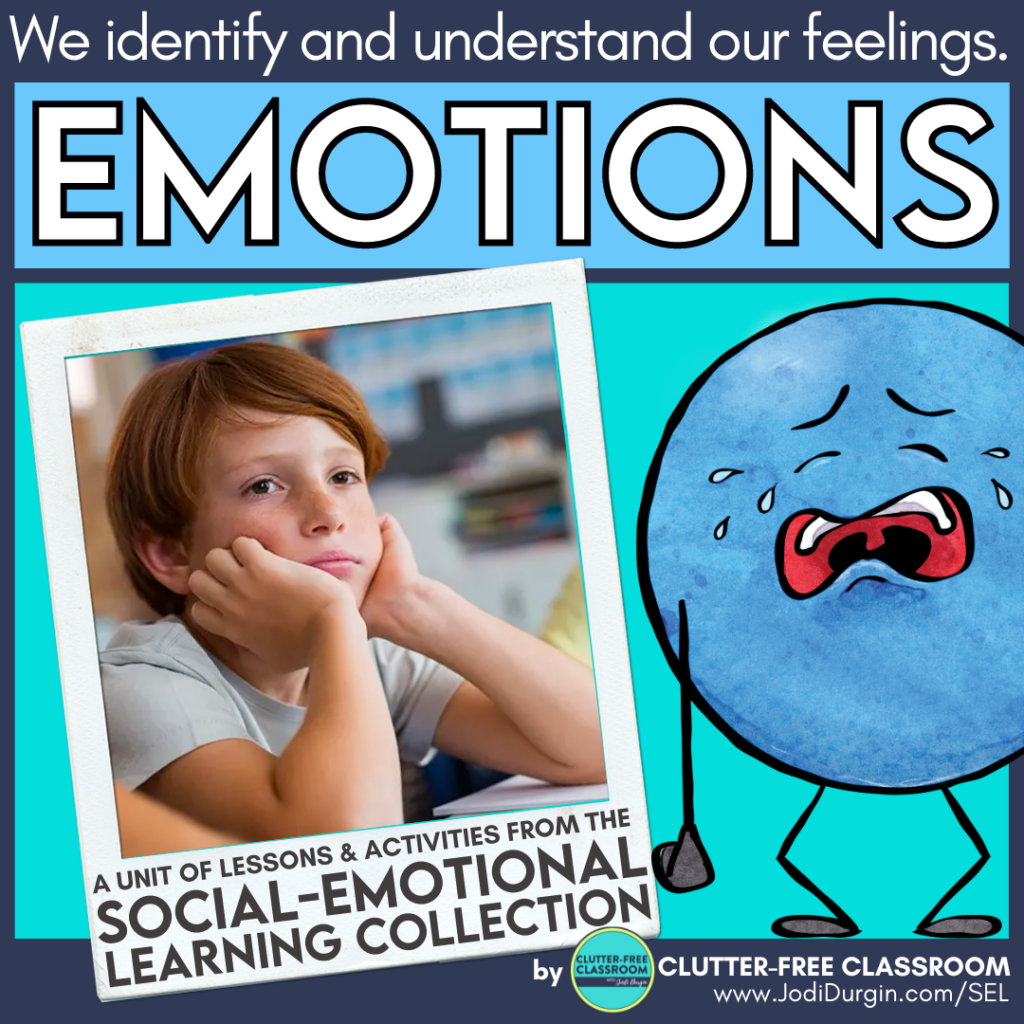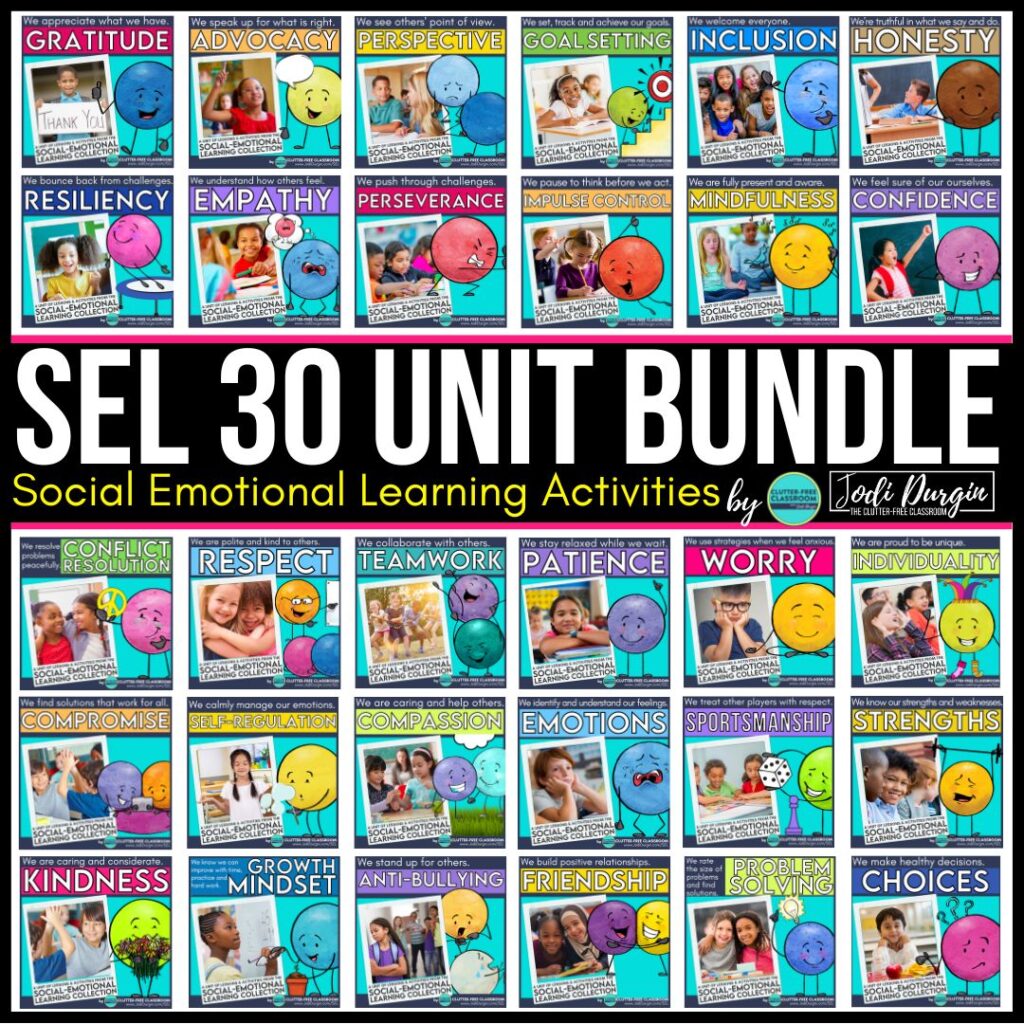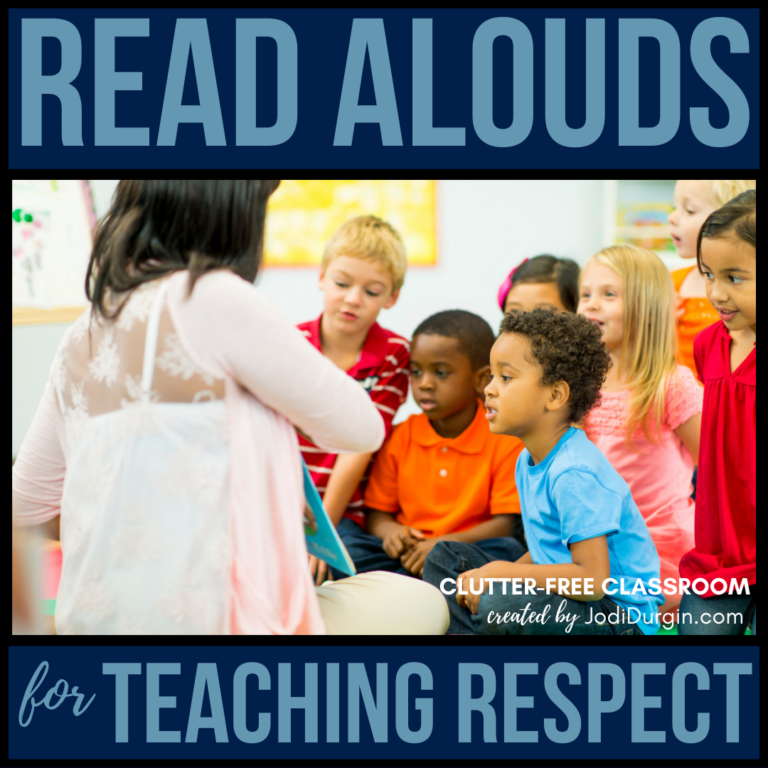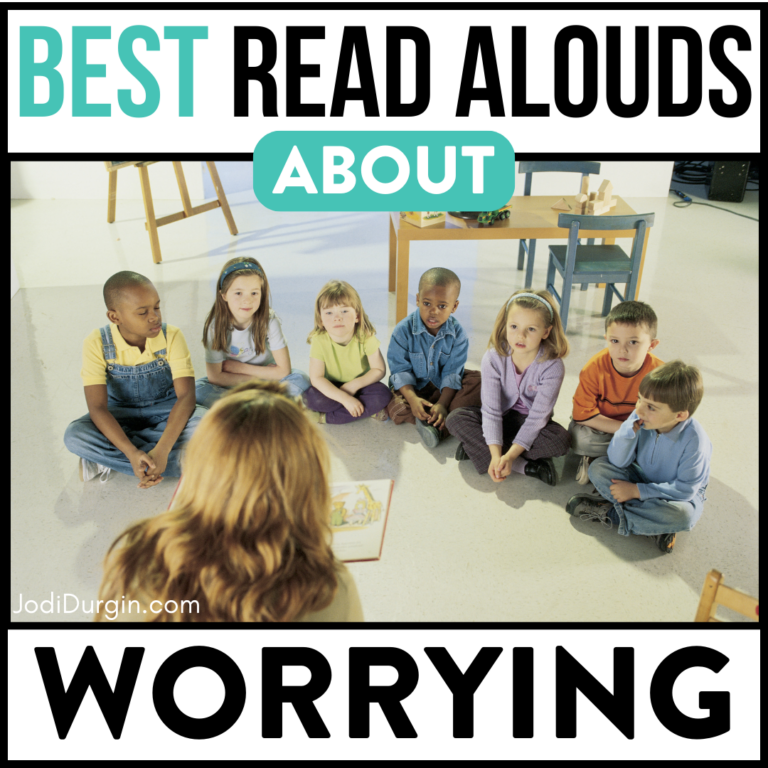If you are an elementary teacher looking to learn how to help your students recognize and understand their emotions, then you found the right place! Understanding emotions helps students self regulate. Students who are able to self regulate are more self aware and independent than students who cannot. In this post, we’ll go into detail about what identifying emotions means and why it’s important. In addition, we’ll share tips and ideas for how to teach emotion regulation skills in an elementary classroom setting. Read all about teaching elementary students how to under their emotions in and out of the classroom below!

What Does Understanding Emotions Mean?
Understanding emotions means being able to identify and name when one is feeling an emotion and understand the circumstances that are making them feel that way. When students understand their emotions they are then able to identify when they are feeling different emotions.

Why is it Important for Kids to Understand Emotions?
It is important for kids to understand emotions because it allows them to name the feelings that they are experiencing and examine why they are feeling that way. It takes all of the uncomfortable big and small feelings that they are experiencing and puts a name to them, making them easier to process. This is the first time being able to manage emotions and behavior.
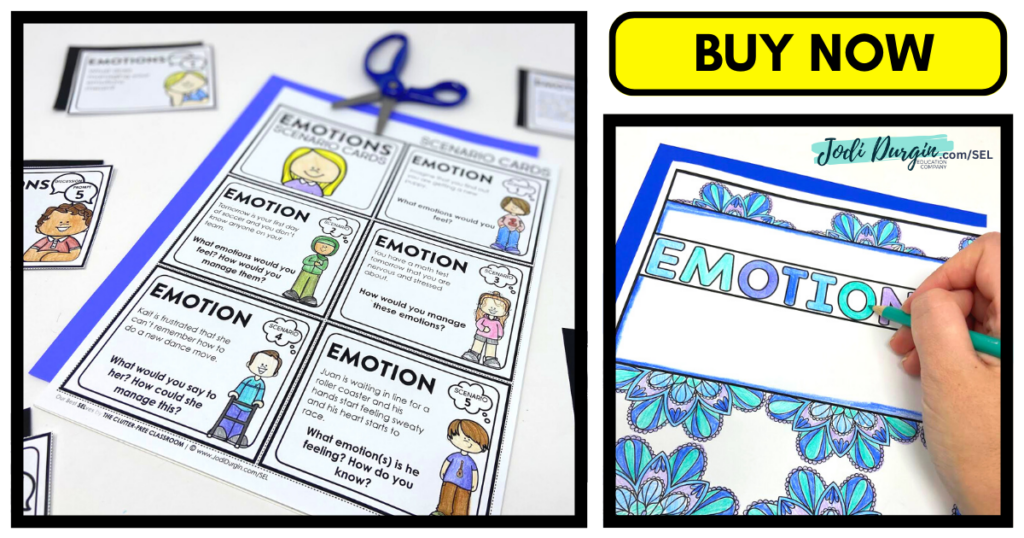
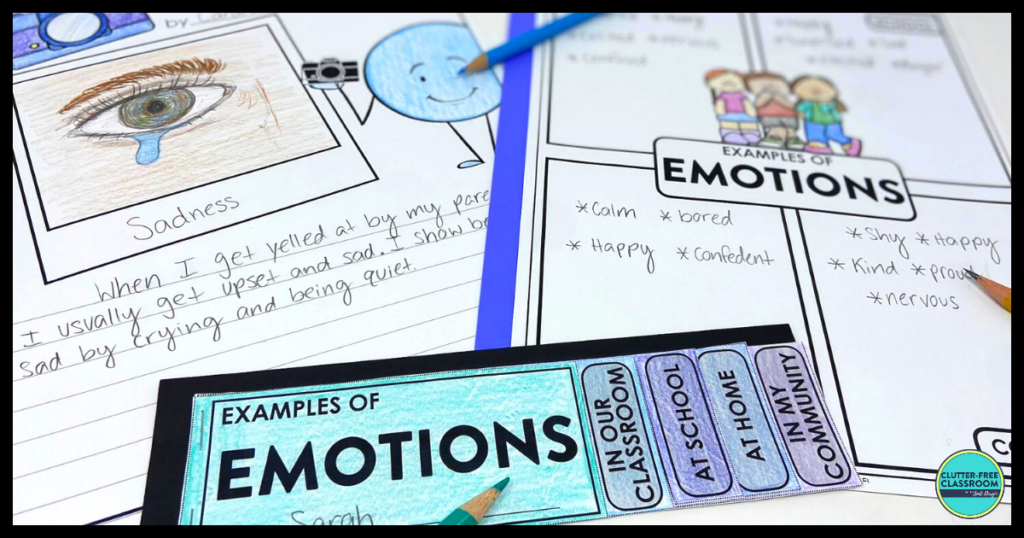
How Do I Know If I Need to Teach Emotions in My Classroom?
The students in your 1st, 2nd, 3rd, 4th or 5th grade classroom would benefit from emotions lessons and activities if any of these statements are true:
- Students can’t name how they are feeling.
- Students are experiencing big emotions.
- Students are having big reactions to small problems.
- It takes students a while to bounce back when they are upset.
- Students appear dis-regulated.

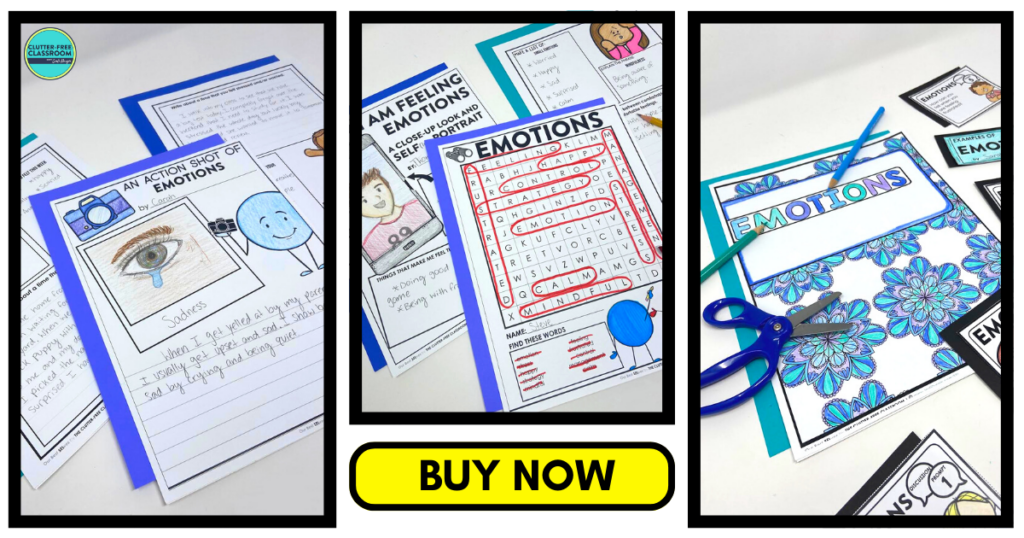
4 Reasons To Promote Understanding Emotions In Your Elementary Classroom
Below are 4 reasons to promote understanding emotions in your elementary classroom.
1. Student emotional intelligence will increase.
Teaching understanding emotions helps increase students’ emotional intelligence because it gives them an understanding of what emotions are and some reasons why we might feel them. Understanding emotions also helps students understand why they are feeling different emotions.
2. Students will learn empathy.
As students are learning to understand their emotions they will begin to recognize emotions in others. This will help them practice using empathy as they recognize how other people are feeling and take on the emotions of others.
3. Students will learn to self regulate.
Self regulation is a natural step when students are learning how to understand and identify their emotions. The next step will be learning how to manage those emotions and control their responses to their behavior.
4. Students will be reflective.
As students learn to understand their emotions they will begin to reflect on their emotions. This means thinking about what emotion they were feeling and what caused them to feel that way. This reflective practice will lend itself to other benefits in the classroom.


5 Tips and Ideas for Teaching Emotions
Below are tips and ideas for teaching emotions to elementary students.
1. Read Aloud Picture Books about Emotions
Picture books are a great way to introduce and teach an SEL topic. It gets students thinking about the topic and activating their background knowledge. Check out this list of picture books for teaching emotions!
2. Watch Videos about Emotions
There are tons of free online videos out there that promote social emotional learning. It’s a fun and engaging way to teach SEL skills that your students will enjoy. Check out these videos for teaching emotions!
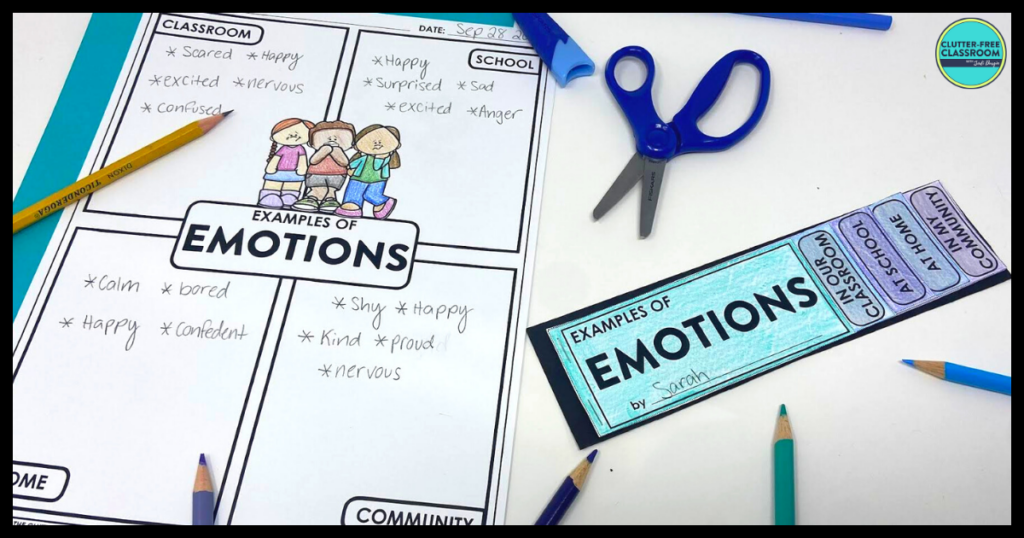
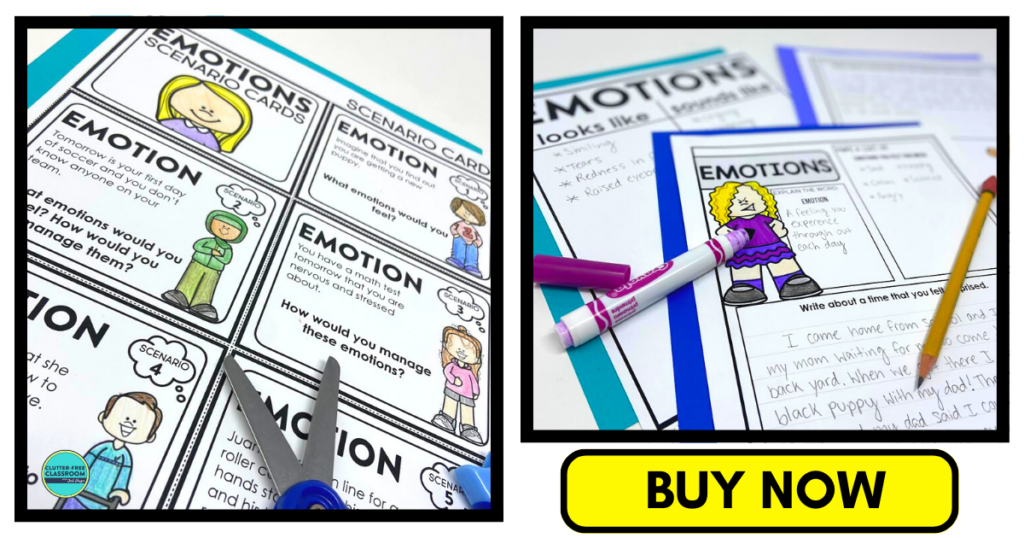
3. Explicitly Teach Vocabulary Related to Emotions
Vocabulary words can help students develop understanding of emotions and create connections through related words. Our emotions SEL unit includes ten vocabulary cards with words related to the SEL topic. It is important for students to be able to see, hear, and use relevant vocabulary while learning. One idea for how to use them is to create an SEL word wall as students learn the words.
4. Provide Practice Opportunities
When learning any skill, students need time to practice. Social emotional learning skills are no different! Our emotions SEL unit includes scenario cards, discussion cards, choice boards, games, and much more. These provide students with opportunities to practice the skills independently, with partners or small groups, or as a whole class.
5. Integrate Other Content Areas
Integrating other content areas with this topic is a great way to approach this SEL topic. Our emotions SEL unit includes reading, writing, and art activities.
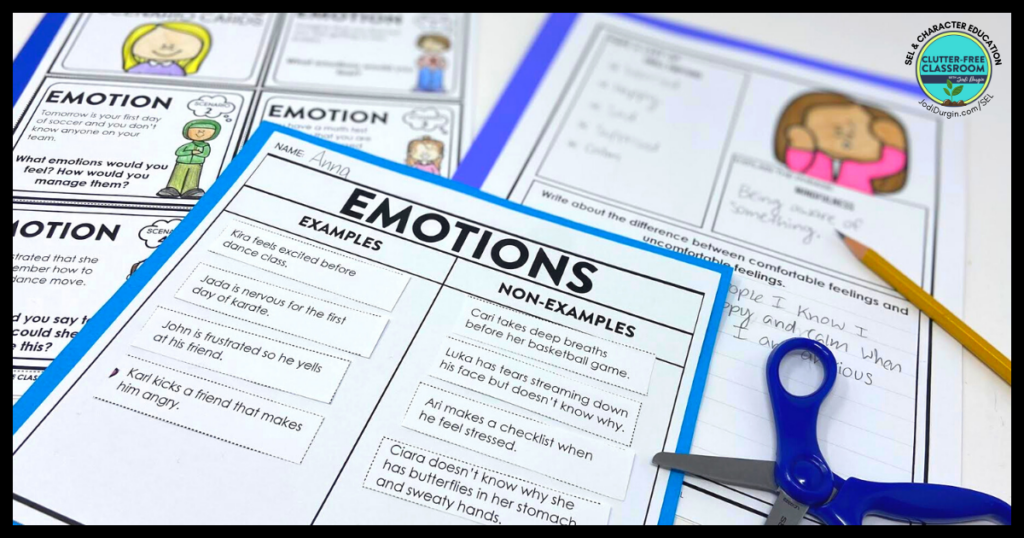
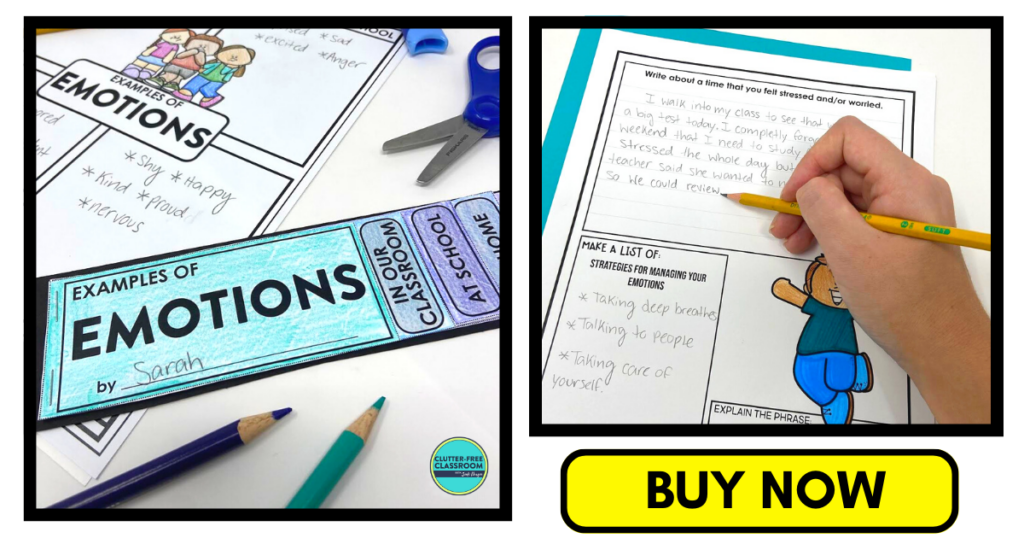
Skills Related to Emotions
Emotions, in the context of social emotional learning (SEL) or character education, refer to the feelings and states of being that individuals experience. While “emotions” is a widely used term, there are other words and phrases that can convey a similar meaning. These alternative words highlight different aspects of emotional experiences and states. Here are some other words used in the context of emotions:
- Feelings: Describing the subjective experiences and sensations associated with emotions.
- Affect: Referring to the broad range of emotional experiences, including both positive and negative states.
- Moods: Long-lasting emotional states that can influence one’s overall disposition and outlook.
- Sentiments: Reflecting the deeper, more enduring emotional attitudes or inclinations.
- Emotional states: Describing the temporary conditions or states of being that individuals experience.
- Inner experiences: Highlighting the subjective, personal nature of emotions and their internal manifestations.
- Psychological responses: Referring to the cognitive, physiological, and behavioral reactions that accompany emotions.
- Mood states: Describing the prevailing emotional atmosphere or disposition.
- Emotional well-being: Referring to the overall state of emotional health and balance.
- Affective experiences: Emphasizing the subjective, personal, and conscious aspects of emotions.
These terms capture the essence of emotions and encompass the range of feelings, affective experiences, and states of being that individuals encounter within the realm of social emotional learning.
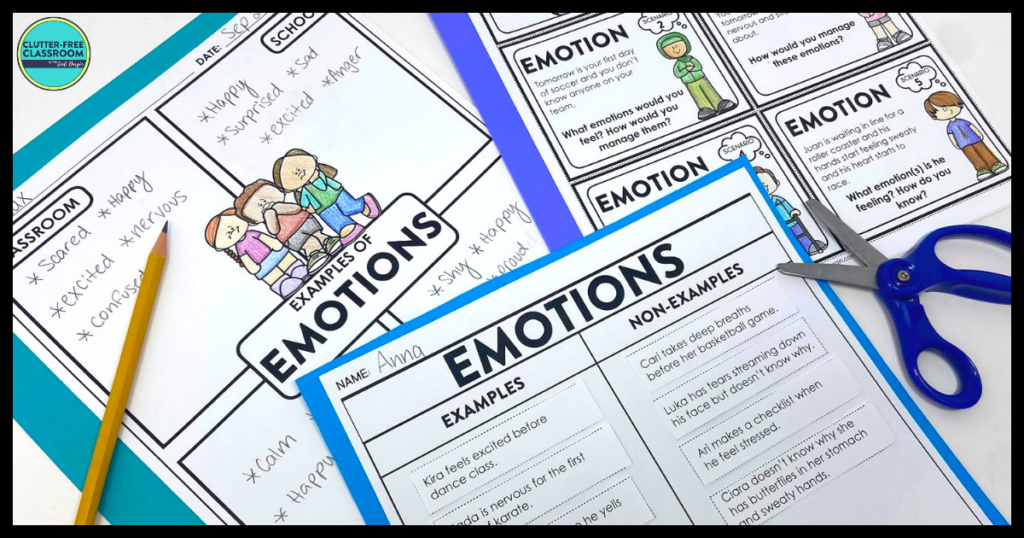
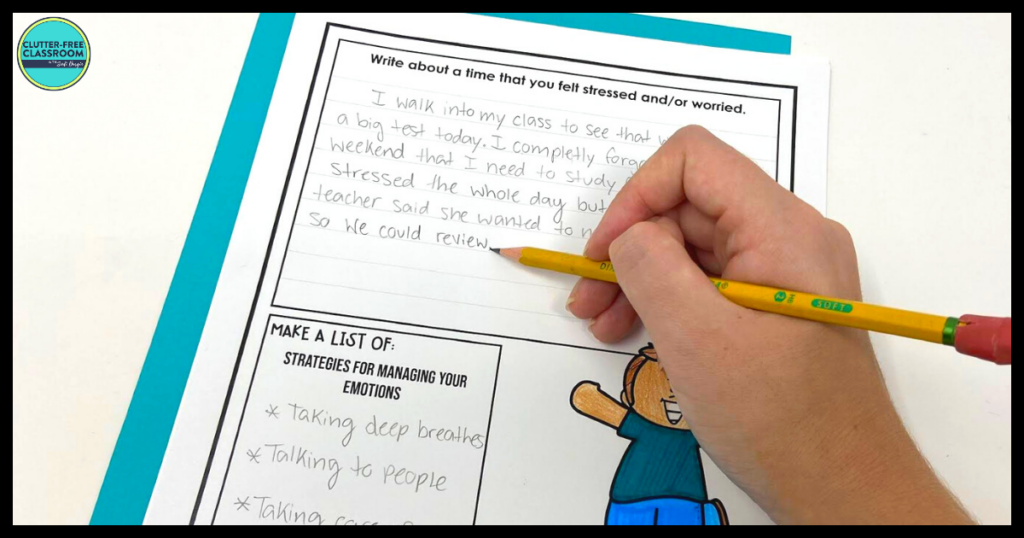
Download the SEL Activities
Click an image below to either get this individual emotions unit or get ALL 30 SEL units!
In closing, we hope you found this information about teaching emotions to elementary students helpful! If you did, then you may also be interested in these posts.

